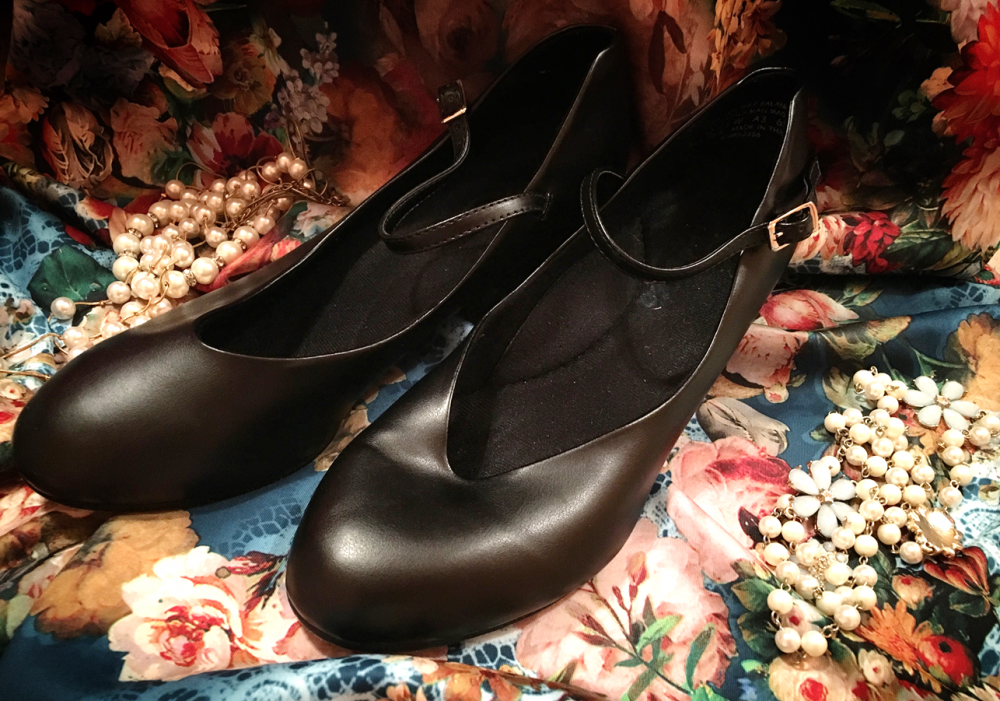Check out Kathryn Morgan’s website, If The Pointe Shoe Fits, for more great tutorials!
Guest Post: Performing Character Roles

Party Scene in Birmingham Ballet’s Nutcracker
Adult ballet students often find themselves cast as party guests, mothers and fathers, royal court members, and villagers. On the surface, these can seem like “little” parts. But, as veteran performers know, character roles are challenging, rewarding, and worthwhile–not to mention being important to the plots of story ballets! Mikko Nissinen, artistic director of Boston Ballet, told Pointe Magazine, “In a character part, the dancer doesn’t have the technical framework of a traditional role to fall back on. It’s all acting. People really have to go deep into their emotional side, and it takes guts to get out there and do that.”
Ideas for Preparing for Character Roles…
Think about the “who, what, and why” of your character –what motives them, how they respond to different situations, and why they respond this way. If your character doesn’t have a name or back story, create one yourself.
In her video Becoming a Character – Nutcracker, Kathryn Morgan, a former New York City Ballet soloist, says that you should ask yourself the five key questions that actors are taught to inquire about their characters:
“Who am I?
“Where am I going?”
“Who am I going to meet when I get there?”
“What do I want?”
“What extent am I willing to go to get that?”
Morgan also advises that you consider, “What is the music telling me?” She says, “The music is your guide to your character.”
Watch movies with characters similar to one you’re going to play.
When New York City Ballet soloist Georgina Pazcoguin was preparing for the role of Carabosse in The Sleeping Beauty, she turned classic childhood films for inspiration. She told Pointe Magazine, “I called my dad and asked him to send me tapes of every Disney movie that had an evil witch! I took a lot from 101 Dalmations’ Cruella de Vil in particular.”
The first year that I was cast as the feisty, flirtatious maid in the Nutcracker party scene, I used Audrey Hepburn’s Eliza Doolitte from My Fair Lady as inspiration for interpreting my part. Like my character, Eliza is working-class, spirited, romantic and enjoys dancing and chocolates. I also liked Eliza’s animated body language and I tried to imbue some of that energy into my performance.
If your character’s personality is more open to interpretation, such as a party parent or royal court member, period dramas or movies and tv series from the fantasy genre might be a place to find a character to inspire yours.
Remember, you don’t have to directly mimic every aspect of a film character, you can just take elements of their personality, expressions, and body language that you like best and that work well for your role.
Watch performances of ballet character parts on YouTube, DVDs, or live if possible.
Do strengthening exercises like Pilates. Movement is part of acting and greater strength will improve your overall movement quality. This will help your performance even if your character doesn’t dance or isn’t supposed to be graceful. American Ballet Theatre director Kevin McKenzie explained to PlaybillArts, “Character performances must be defined by energy—by how the dancer moves.”
Film yourself rehearsing at home. Experiment with different expressions, reactions, and gestures. See which ones you like best.
Have fun! Character roles are great opportunity to explore your dramatic side and become more fully immersed in the fairy tale onstage.

Photo by Rachel Hellwig.
~Resources~
Pointe Magazine: Quite A Character
PlaybillArts: In Character with ABT: Exploring Character Roles in Ballet
Becoming a Character – Nutcracker | Kathryn Morgan:
Rehearsal of Carabosse for the Royal Ballet’s Sleeping Beauty:

